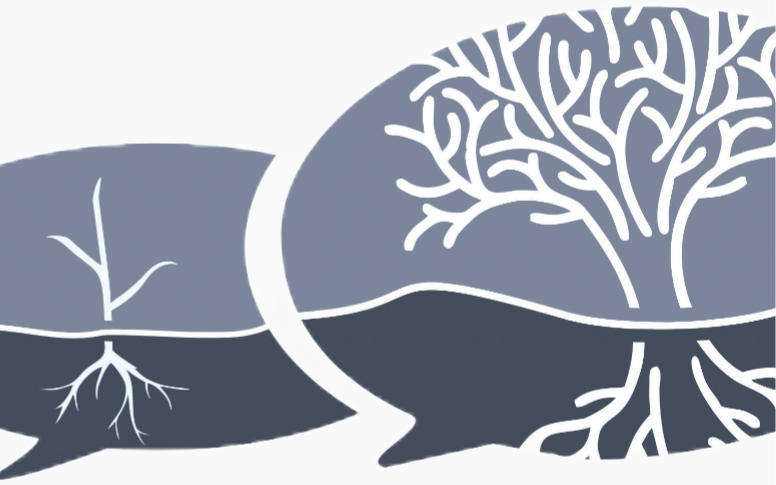While I’m sure someday I’ll regret using this language, Christianity is fundamentally a story about Jesus overcoming the “bad guy.” Why will I regret it? For two reasons:
- First, in our typical way of thinking, the bad guy is, well, bad. There’s something fundamentally wrong with the bad guy and the ultimate goal is his defeat. But Jesus doesn’t do cops and robbers. His frame is not America vs. Radical Islam. It’s not even about us and them. In fact, Jesus the whole point is that Jesus doesn’t see the “bad guy” in the same way we think of bad guys. Instead, for Jesus, overcoming the “bad guy” is about transformation and healing. You know, sort of like Gru in Despicable Me.
- Second, the bad guy is overcome by violence, power, and strength … and Jesus uses none of these.
When all the pretense and theological language is stripped away, this is the fundamental question of atonement. Atonement literally means “at-one-ment” … it’s about bringing that which is separated back together. It’s the idea that something ripped apart humanity and divinity. People are disconnected from their source, their ground of being, that thing that bestows identity and purpose. This is why we devote so much time and energy trying to prove ourselves or escape that deep hollow ache within.
While human sin is the easy answer, what isn’t particularly clear is how Jesus overcomes sin. Western Church history offers two primary answers. The following reviews each of those and offers my thoughts on a third option.

Is the Devil the Bad Guy?
For the first 1,000 years of Church history, Jesus overcame the bad guy of Satan. The basic theory says that with the Fall (Genesis 3), Satan kidnapped humanity from God. In order to reclaim humanity, God offered the ransom payment of Jesus’ life. For those of you familiar with C. S. Lewis, this is what we see in The Lion, the Witch, and the Wardrobe when Aslan offers himself for Edmund.
This theory worked particularly well in a hostile Roman world. There was a clear external enemy that persecuted the church, so the principalities, powers, and governments of this age served as manifestations the Satan. However, as time went on, Christianity ascended to a place of political power putting the church in the role of the enemy. While there is some truth to this accusation, it makes for a really dysfunctional theological framework.
Moreover, theologically, this approach is troublesome because it makes Satan an opposite equivalent of God in terms of cosmic power and authority. This means they’re competing gods or neither is God. Moreover, there’s no good way to work around the divine trickery and deception of the random payment (Jesus) immediately escaping bondage (the resurrection).
Is God the Father the Bad Guy?
While they would deny it, most Christians today believe God the Father is the bad guy. Let me explain.
Around the year 1,000, a guy named Anselm offered a new theory of atonement rooted in Medieval society. That world placed high importance on the honor of the lord who protected a group of surfs. A surf dishonoring a lord required reparation. Anselm applied this framework to God with Jesus offering reparation to the Father for the dishonor of human sin. In time, this theory evolved to a legal model where, rather than Jesus offering an equal repayment, he endured a brutal punishment to satiate the wrath of God.
However you want to explain it, in the end, the bad guy whose heart must be changed in this model is God the Father. God’s inability to get over human sin prevents reconciliation. Whether you want to call it restoring honor or honoring holiness, in this framework, the goal, as Gerhard Forde describes it in a moment of impeccable honesty in Theology is For Proclamation, is to “get God off our backs.” Ultimately, this fueled my hating God and is why I had to find a new God.
For those curious about how I handle the holiness of God without the Father needing honor restored or an appeasement of divine wrath, check out my Good Friday post.
Is My Heart the Bad Guy?
Given the challenges that come with the two previous models, I would like to offer a third approach. I believe human hearts needs to experience a change to reconcile humanity and the divine. Before I continue, remember, this is where we need to dance on egg shells with the analogy. To say that my heart is the “bad guy” doesn’t mean I’m bad. Your heart being the “bad guy” doesn’t make you bad. It simply means that our hearts are what prevent us from reconnecting to God … and Jesus is out to fix that.
With that important reminder in mind, let’s consider the narrative of the Fall. In Genesis 1 and 2, divinity and humanity are together. Adam and Eve walk in the garden with God and understand their role in creation in light of their relationship with a God who gives them all they need. So what changes with the Fall?
First, it’s important to notice what doesn’t change: God. God doesn’t withdraw. Instead, God comes. God is still walking in the garden. God even calls out and invites continued relationship.
However, instead of responding to the divine call, Adam and Eve hide. They cover themselves. They experience shame. In other words, sin changes the human heart. Humanity no longer believes that God is good. We question our value. People no longer trust one another.
Community and connection dissolve and we find ourselves in isolation. Sin results in us becoming the autonomous individual. In other words, as German theologian Martin Luther once put it, our hearts turn in on themselves.
Overcoming the Bad Guy
One question remains: How does Jesus overcome the autonomous individual and draw us back into connection with God, ourselves, and others? Let me offer three thoughts:
- Jesus’ life invites us to change our perception of God. In his divinity, Jesus reveals what God is like. Specifically, God wants to be in a relationship and dwell with us. Sin isn’t an issue for God, but our sin makes God an issue for us. Jesus invites us to reject our impulse to recoil and step into the divine embrace.
- Jesus also invites us to change our self-perception. In his humanity, Jesus reveals what it is like to be fully human. To live from a place of inherent value, worth, and beauty … simply because God knit us together in the divine image. We are loved because we are, and we are because we are loved. This reality invites us to live from a place of inner peace.
- Shame drives our sin nature and creates a never satisfied compulsion to prove ourselves through power (which usually involves some form of violence). The result is hostility towards each other. On the cross, Jesus takes everything the world can dish out and carries it to the grave. He removes the violence from the system. When we follow Christ’s example and hand the effects of others claims to power over to him, we too are able to remove violence from the system and create a fresh ground for relationship and connection.
How could shifting how you think about the “bad guy” and who the “bad guy” is change your faith journey?


So here’s the question: are these 3 theories mutually exclusive?
Satan got us to separate ourselves from God. We fell for his lies and continue to do so. Like Edmund, we were tricked into aligning ourselves with the enemy. Jesus isn’t a random payment, but the perfect payment for imperfect sinners, the ultimate human who, because He’s infinite and timeless, can endure infinite hell in 3 hours. Or it wasn’t a matter of having to multiply it, but just enduring one person’s hell compressed into 3 hours, and the paragon doesn’t so much tip the scale but flip it upside-down.
God made a requirement and had to follow through based on His own holiness, not because He can’t come into the presence of sin (We see Him doing that in the garden, wrestling with Jacob, in Bethlehem, etc.), but because His holiness is a consuming fire, and we can’t handle coming into it. But because He wants us to spend eternity with Him (now), He needed to purify us to reshape us for His Kingdom, to disinfect us and immunize us. Jesus gave us a blood transfusion by essentially swapping blood with us.
And the “my heart” part sounds like sanctification to me: learning how to live in a new (i.e. The original) reality, seeing through satan’s deception like the sunglasses in They Live and learning the joy of loving God and others by following and experiencing.
I think the “bad guy” is sin, like a disease. Satan infects and discourages inoculations & treatment & denial. God heals by giving us pure blood while giving our tainted blood to Jesus. Our hearts experience the effects of both the disease and the healing.
I certainly think that, based on certain assumptions, perspectives, and cultural realities, that the Spirit can use each to draw people into relationship with God. I also think that outside of the right factors, each can become problematic (although I’m too embedded in my context to see the problems with the third at this moment).
Thoughts?
I don’t understand yours well enough to find the problems with it except that it doesn’t seem to mesh with some of the passages I sent you. But I also have no problem with problematic philosophical conclusions, as I’ve found that, when it comes to God, there are certain things we just don’t understand, holiness being the biggest. I think each is just incomplete, yours included.
But I just finished listening to Leviticus again, and I agree with your post on the OT sacrificial system that it takes on new meaning when looked at through the cross.
This all reminds me of the other theme I wrote on & have had running through my mind lately: the necessity of community. Your paradigm certainly captures that.